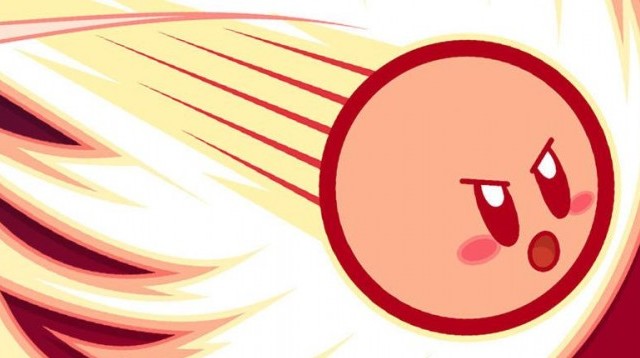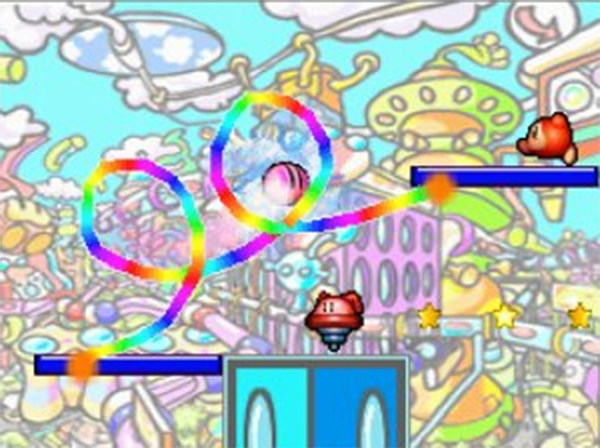
Gamers can be a skeptical bunch. As much as we cry out for more innovation, we can be quick to label strange and new ideas as gimmicks before going back to the comfortable and familiar. Nintendo’s last decade of hardware has made it especially aware of this issue, as it have been more aggressive than any other company in the industry in introducing fundamental changes to the way we play and experience games. Time and time again, Nintendo takes a risk that many immediately dismiss as being shallow and pointless, and sometimes those critics appear to be right before having to eat their words because a game comes along that makes everything come together.
Nintendo’s revolutionary ambitions really began back in the fall of 2004 with the release of Nintendo DS, a console that would go on to become one of the greatest success stories in gaming history but started out with a meek whimper. In other words, the launch was really quite bad. Feel the Magic was a somewhat entertaining oddity, but the only game of substance was a remake of Super Mario 64, which was undoubtedly fun and did much to expand the original game, but it didn’t do much to make an argument for the second, touch enabled screen. In many ways it was a prequel to what would happen with 3DS.
And then Kirby showed up.
Nintendo needed a game to prove the potential of touch enabled gaming. Kirby, a loveable franchise that has never achieved the acclaim of Mario or Zelda, managed to deliver with a phenomenal platformer that stands among the best the genre has to offer. Kirby: Canvas Curse was released in June of 2005 after seven months of unproven potential. In all fairness, WarioWare: Touched! was released during this time, but several-second microgames did little to establish how dual screens and touch sensitivity could benefit the deep gameplay experiences most gamers prefer (though, considering the recent direction of mobile gaming, perhaps it was well ahead of its time). Canvas Curse wasn’t an interesting but glorified tech demo (see Pac-Pix), or a collection of disparate ideas– it was a fully realized platformer filled to the brim with new ideas and enough content to keep you playing well beyond your first play-through.

I can’t begin to tell you how shocked I am this mechanic hasn’t been ripped off ad nauseam.
But this isn’t a review of Canvas Curse, so I’ll keep the gushing about the gameplay to a minimum. See this if you want a full-blown review. The game is a platformer in which Kirby is a ball who moves along the lines you create using the stylus, and there are the normal assortment of enemies with powers ripe for the stealing. These simple mechanics prove surprisingly versatile as the levels grow in scope and complexity, with plenty of hidden goodies to be uncovered and rewards for quick and economical completion. Though my favorite aspect of the game has to be unlockable characters, who each add their own unique twist to the mechanics and encourage multiple play-throughs. It also helps that the audio and visual design offer the top-notch whimsy the franchise is known for.
With that out of the way, let’s get to back to why games like this are just so important: gamers need to experience new ideas in a manner that directly shows how they will benefit the games they love. Wii launched with two amazing examples: Wii Sports brought a level of physical nuance to what were otherwise simplified sports games that immediately connected to people who wouldn’t enjoy bowling through button presses, and Twilight Princess immediately made it abundantly clear how motion controls could keep up with the complex gameplay of an epic Zelda title. Nintendo 3DS had a much slower start than Wii, and even though 3D visuals might not be as directly innovative as touch or motion controls, the likes of Super Mario 3D Land and A Link Between Worlds clearly show how added depth can improve a game and effectively serve as a gameplay mechanic itself.
In many ways, this idea can be applied to Wii U’s continued struggles. As much as I love my Wii U, particularly off-screen play, I must admit that there has yet to be that one game that truly jumps out to firmly establish how the GamePad can fundamentally change and improve gaming. While several games have made very good arguments for the GamePad with creative and interesting game mechanics (check out The Wonderful 101), I think we are still waiting for the singular “AHA!” moment. Canvas Curse was a game that simply could not be replicated on another console without drastic changes to the design that would be nothing short of ruinous. I don’t think the same can really be said for any of the best games on Wii U; the transition might hurt some games more than others, but all would still remain exceptional.
While the answer for Wii U’s dilemma might still be a mystery for the time being, Kirby: Canvas Curse‘s place in gaming history is well established. Other DS games proved to be bigger successes and one could easily argue that Mario Kart DS is the game that truly sold people on the system, but Kirby’s brilliant little gem is what really proved the potential of the system as a home to innovation and new ideas. For months it seemed like Nintendo’s weird little DS would crumble at the feet of the technologically more advanced PSP, but the competition showed up with little more than inferior versions of well established ideas, which was good enough to build its own little niche but proved far too little to combat the wave of creativity that would elevate DS.
With the immense success that eventually found its way to Nintendo DS, it would be foolish to argue the system would have failed without Canvas Curse, but there is no denying that it proved what the system was capable of. Every new platform really needs a game like Canvas Curse, a title that can stand out as an argument for a new piece of hardware, something that is just that much more critical when the hardware is trying something especially risky. So, I guess, here’s to hoping that Wii U gets its Canvas Curse… or at least gets the game ported to it once Nintendo launches the DS Virtual Console.




 ShareThis
ShareThis






